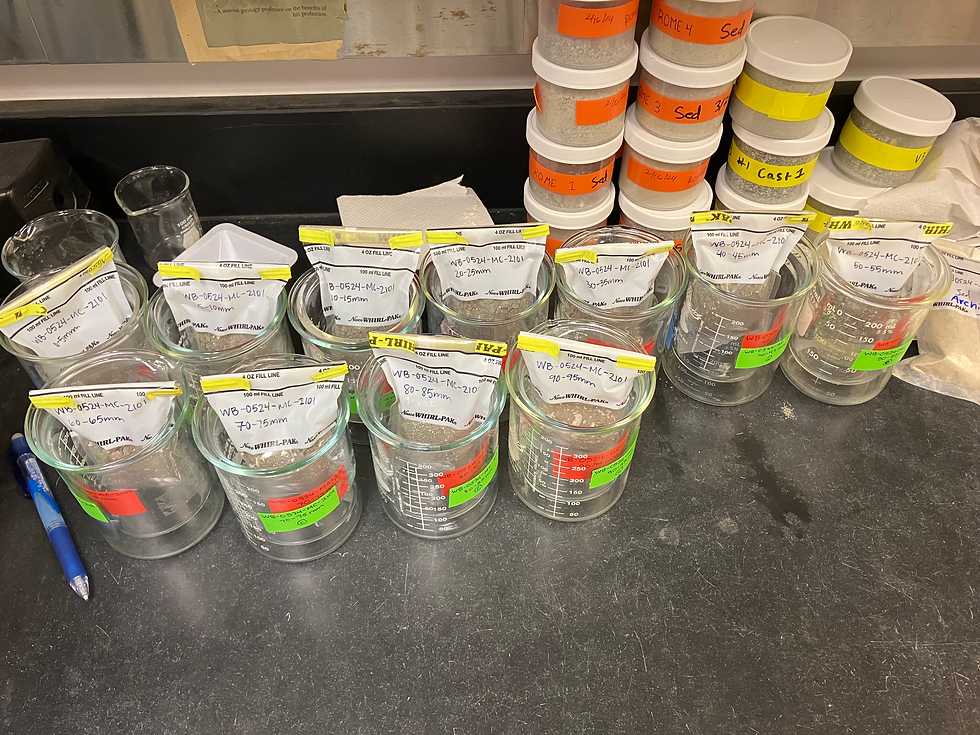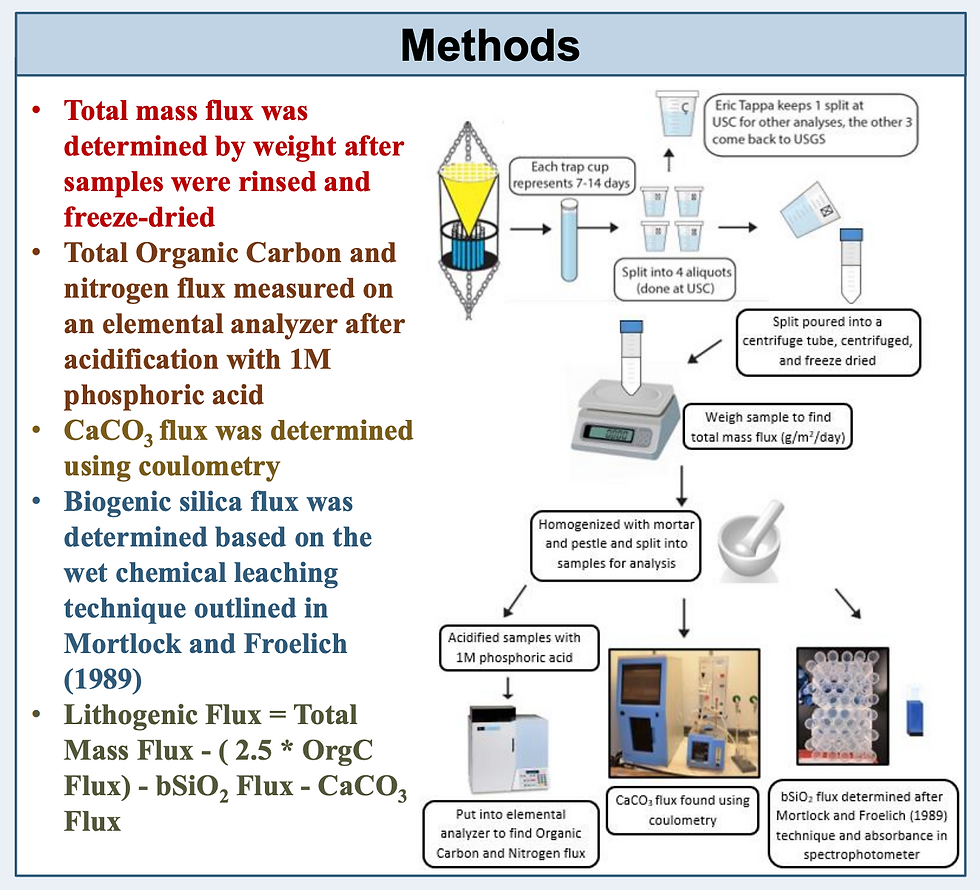Best Practices for Scientific Data Collection and Analysis
- Rosalie K. Cruikshank
- Jan 13
- 4 min read
Scientific data collection and analysis play a vital role in research because they are the basis of the information that is used to inform others. The accuracy of research products relies heavily on effective laboratory practices during the early phases. I will discuss elements of successful data collection and analysis that I have learned through my research experiences, focusing on three main areas: avoiding contamination, staying organized, and remaining unbiased.
Avoiding Contamination
Contamination can lead to inaccurate conclusions, therefore, identifying potential sources of error during data collection is crucial. Researchers must plan ahead and adhere to strict protocols throughout their studies. For example, with my research at the US Geological Survey (USGS), I was developing the methods for measuring and quantifying microplastic flux in the northern Gulf of Mexico. However, we had to prevent contamination from other plastics throughout the sampling and processing by using equipment made of glass or metal instead of plastic.
We also know that the chances of contamination can never be zero. Therefore in order to account for any contamination that happens during sample processing, you should have blanks. The blanks will serve as a baseline for contamination that happens during the process, and then their values can be subtracted from whatever is found in the real samples.
Rigorous training programs for all scientists involved in data collection also help. By ensuring that everyone understands the standard operating procedures (SOPs) and what contaminations to avoid, the risks in contamination are reduced. Regular checks of sample collection methods by a lead scientist or even someone who works outside of your lab and is not emotionally invested in the research can identify and address potential contamination points, safeguarding data integrity.

Staying Organized
When someone can trace the samples from start to finish, the final results more credible. Keeping thorough records of samples, notes, labeling methods, and SOPs is vital.
Correctly and consistently labeling samples is one of the best ways to organize your data. Each lab may have a different labeling scheme, but each label should typically indicate the date, time, project name, and any other sample details. However, keep it short - you will most likely have other lab notebooks or online documents with additional notes about the samples. Immediate and accurate documentation of information ensures that you won't avoid important details that could negatively impact analysis or writing (when you get to that point). Make sure notes are easy to locate and trace back to the sample. I like to include links when possible, or share things in "the cloud" so that my supervisors can monitor progress. Consistency is crucial, especially in studies with hundreds of samples.
Developing standard operating procedures for both data collection and analysis streamlines operations and helps reduce inconsistencies. Make sure these standard methods are available and easily understandable to everyone performing them. I have found that a good way of presenting methodologies is through flow charts with pictures (Fig. 2). They easily show the next step and can be referenced when an advisor is not present. If you're new to the lab, study those SOPs and ask questions about the things you don't understand! Providing thorough guidelines and templates leads to enhanced overall data quality.

Remaining Unbiased
The last thing to help with sound data that I will touch on is the elimination of bias. It can be anywhere in the process, from the start of the project, to picking data to be used, analyzing the data, and writing up the results. Bias can be intentional or unintentional, but it is important to identify and work against any biases you may have or encounter. Having a good team that is honest with you would help to catch and eliminate bias. You can also check your own work and thinking to be very intentional to be as impartial and objective as possible.
Another thing I briefly mentioned earlier is about implementing blinding methods. When you have someone else check your work, they can catch things which you might not be able to see. Additionally, by having an unbiased third party review your work, they can point out flaws that you or your research group may have trouble admitting yourselves. One thing I have learned about research is that it's hard not to get emotionally invested on the projects that you spend so much time and effort on. Ultimately though, it is to your benefit to have the flaws pointed out so that you can work toward a resolution and be able to present results you are sure of.

Going Forward
Sample collection and analysis can sometimes seem difficult because of all of the things that need focused attention and patience. However, remaining diligent in making sure samples are uncontaminated, keeping an organized space and documentation, and remaining unbiased in evaluations is important for presenting high quality scientific research.
By remaining organized, being receptive to suggestions for improvement, and being deliberate about not inserting bias into my work, I can ensure that I get results that I am proud of. These things do not always come naturally, but by taking time to purposefully do them I can make sure that I make a difference toward a common good.





Comments